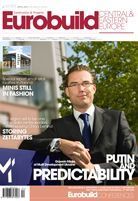They say the road to hell is paved with good intentions: after the initial idealism, the old cynical way of doing things tends to reassert itself. But this year’s winner of architecture’s version of the Nobel prize would seem to be an exception to this rule. In 1994 Shigeru Ban became involved in the relief effort for Rwandan refugees. For the last twenty years he has been trying to help wherever his skills might prove useful. The route his work has taken him is also an itinerary of recent catastrophes: Turkey, India, China, Italy, Haiti and his homeland Japan, parts of which were devastated by the tsunami of 2011. Ban has also been on hand wherever creativity and an unconventional approach has been needed in order to solve some of the basic existential problems of the people who have suffered as a result of such cataclysms. One of his ideas was to use the cardboard tubes and containers used for sea transport to build shelters. Thanks to the utilisation of such materials,






























































